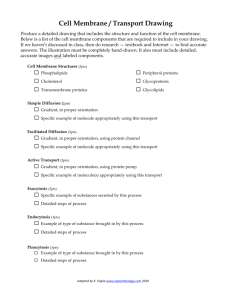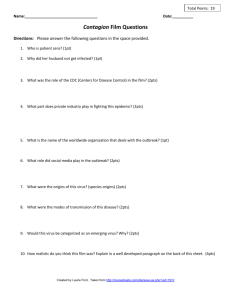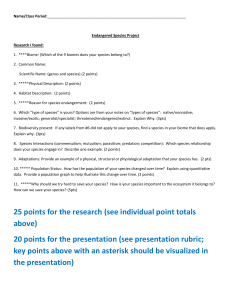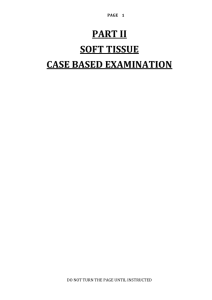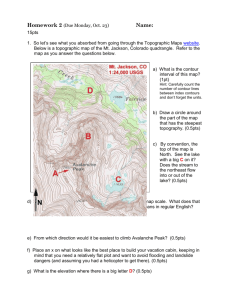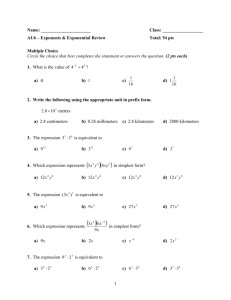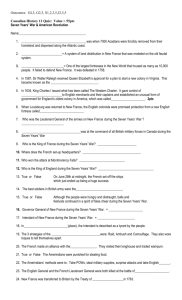Which of the following processes represents a decrease in the
advertisement
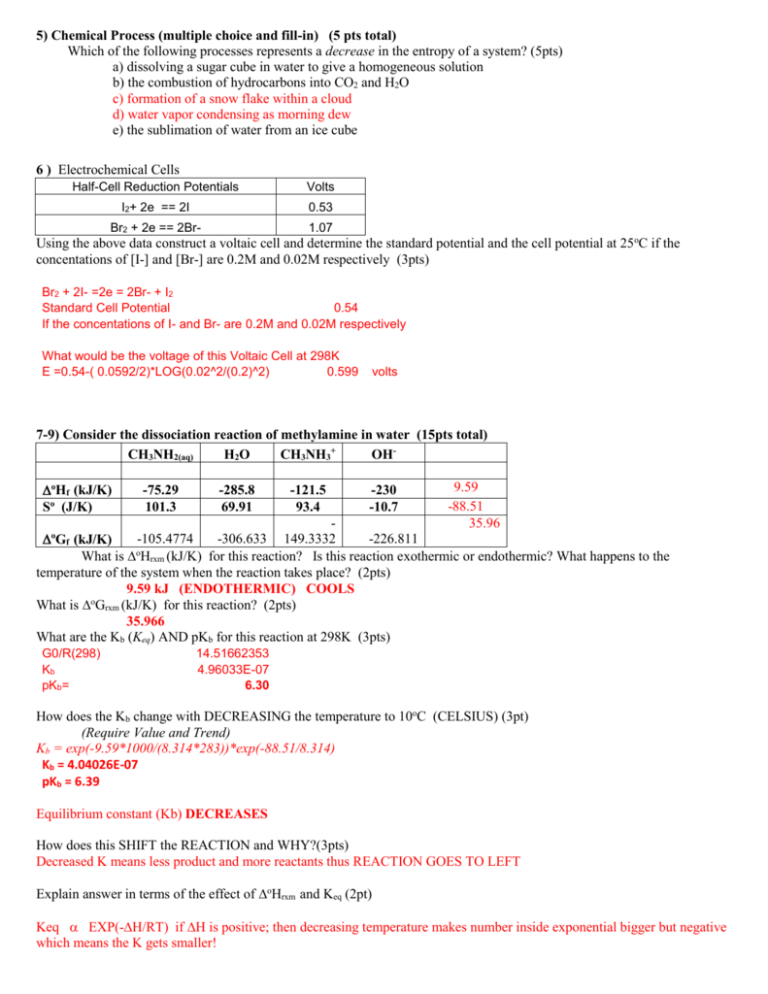
5) Chemical Process (multiple choice and fill-in) (5 pts total) Which of the following processes represents a decrease in the entropy of a system? (5pts) a) dissolving a sugar cube in water to give a homogeneous solution b) the combustion of hydrocarbons into CO2 and H2O c) formation of a snow flake within a cloud d) water vapor condensing as morning dew e) the sublimation of water from an ice cube 6 ) Electrochemical Cells Half-Cell Reduction Potentials Volts I2+ 2e == 2I 0.53 Br2 + 2e == 2Br- 1.07 Using the above data construct a voltaic cell and determine the standard potential and the cell potential at 25oC if the concentations of [I-] and [Br-] are 0.2M and 0.02M respectively (3pts) Br2 + 2I- =2e = 2Br- + I2 Standard Cell Potential 0.54 If the concentations of I- and Br- are 0.2M and 0.02M respectively What would be the voltage of this Voltaic Cell at 298K E =0.54-( 0.0592/2)*LOG(0.02^2/(0.2)^2) 0.599 volts 7-9) Consider the dissociation reaction of methylamine in water (15pts total) CH3NH2(aq) H 2O CH3NH3+ OHoHf (kJ/K) So (J/K) -75.29 101.3 -285.8 69.91 -121.5 93.4 -230 -10.7 9.59 -88.51 35.96 -105.4774 -306.633 149.3332 -226.811 oGf (kJ/K) What is oHrxm (kJ/K) for this reaction? Is this reaction exothermic or endothermic? What happens to the temperature of the system when the reaction takes place? (2pts) 9.59 kJ (ENDOTHERMIC) COOLS What is oGrxm (kJ/K) for this reaction? (2pts) 35.966 What are the Kb (Keq) AND pKb for this reaction at 298K (3pts) G0/R(298) Kb pKb= 14.51662353 4.96033E-07 6.30 How does the Kb change with DECREASING the temperature to 10oC (CELSIUS) (3pt) (Require Value and Trend) Kb = exp(-9.59*1000/(8.314*283))*exp(-88.51/8.314) Kb = 4.04026E-07 pKb = 6.39 Equilibrium constant (Kb) DECREASES How does this SHIFT the REACTION and WHY?(3pts) Decreased K means less product and more reactants thus REACTION GOES TO LEFT Explain answer in terms of the effect of oHrxm and Keq (2pt) Keq EXP(-H/RT) if H is positive; then decreasing temperature makes number inside exponential bigger but negative which means the K gets smaller! FINAL EXAM NAME: Print _________________________ Chem 102 (August 9, 2007) Sign ____________________________________ 1)Balance the following reaction in a BASIC environment(3pts). Show number of electrons transferred(2pts) Al(s) + NO2¯ (aq) AlO2¯ (aq) + NH3 (g) H2O + 2Al(s) + NO2¯ (aq) + OH¯ 2AlO2¯ (aq) + NH3 (g) 6ELECTRONS! 2-4) The following initial rate data are for the oxidation of arsenate ion by ferric ion in solution (15pts total): 3- AsO3 + 2 Fe3+ + AsO4 + 2 2OH- 3- Experiment [AsO33-]o, M [Fe+3]o, M Initial Rate, Ms-1 1 2 3 4 4.57E-02 9.14E-02 4.57E-02 9.14E-02 0.5362 0.5362 1.0724 1.0724 5.36E-03 1.07E-02 2.15E-02 4.28E-02 Fe2+ + + H2 O a) What is the Rate Order for the reaction AND Rate Law for this reaction (3pts) R= k[AsO-3][Fe+3]2 Third(3) Order Overall b) From these data, what is the rate constant ? (4ts) 5.36e-3= k(4.57e-2)(0.536)2 k= 0.40 Questions relating to above reaction: c) Does the Rate for the reaction remain constant as the reaction proceeds while the reactants diminish YES NO (1pt) Rate diminishes since the reactants diminish d) Does the Rate Constant (k) remain the same as the reaction proceeds while the reactants diminish? YES Rate constant is independent time but is dependent on T NO (1pt) e) Does the Rate for the (forward) reaction approach approach zero YES NO (1pt) Rate of the forward reaction approaches the Rate of the backward reaction f).How many electrons are being transferred in the above reaction (2pts) 2 electrons are transferred. g) If 2 micromoles of arsenate were used up in this reaction over a 2 second period, what current in amperes would be generated by this reaction? (3pts) Note that 2e are transferred per mole of Arsenate But 2.0E-6 moles of Arsenate have reacted thus 4.00E-06 =0.000004*96500= 0.386C/2sec = moles of electrons 0.386 Coulombs 0.193 A 10) Match the following aqueous solutions with the appropriate letter from the column on the right. A___ C___ D_ B__ 0.32 m 0.18 m 0.17 m 0.62 m AgNO3 = 0.64 MnCl2 = 0.54 NiF2 = 0.51 Sucrose (nonelectrolyte) = 0.62 a) Lowest freezing point b) Second lowest freezing point c) Third lowest freezing point d) Highest freezing point 11) Consider the oxidation of Ethanol to Acetaldehyde on a platinum wire. (5pts total) 2CH3CH2OH + O2 == 2CH3CHO + 2H2O What is the rate order of this reaction and why (1pts) FIRST ORDER is the LOG plot is linear 1/[Concentration of Ethanol] 4.5 Write a time dependent equation that shows the change in methanol with time (4pts) 4 3.5 3 2.5 A = 0.82 exp( -0. 002 t) 2 1.5 1 0.5 0 0 200 400 600 800 Tim e(seconds) 12) Using the fact that pKa(HF) = 3.17; show at least TWO ways to construct a BUFFER solution at pH=3.17 using the following: 0.5M solution of NaOH 0.5M solution of NaF 0.5M solution of HCl 0.5M solution of NaCl 0.5M solution of HF 1) Equal Volumes both HF and NaF 2) One Volume of HF and ½ that volume of NaOH making F3) One Volume of NaF and ½ that volume of HCl to make HF 4) Extra Credit(5pt) Choose one of these and define exactly how you might adjust this solution to a pH of 3.25 pH = pKa –log (Acid)/Conjugate Base) 3.25 = 3.17 –log (acid/Conjugate Base) 0.08 1.1 =log(HF/F) = RATIO of HF/F 13) Fill in missing words (5pts) Endothermic/Exothermic;Free Energy/Entropy/Enthalpy;increase/decrease;release/absorb The two main driving forces in nature are __Entropy_ and __Enthalpy__ The driving force largely responsible for the dissolution of nonvolatile SOLIDS(such as salts) into Solutions is ENTROPY__ since these reactions are often Endothermic. The Temperature dependence associated with the solubility of GASES in solvents is largely due to Enthalpy_ Since the Entropy_ of the gas before and after dissolution are very similar if no negative. The dissolving of most gases are Exothermic, thus release heat when dissolved since the gas molecules are now solvated and lower in energy. Problem 14: Vapor Pressure Using the below information(5pts total): Vapor Pressure (torr) 30 Tolune BP 173.3 oC A 25 Benzene BP 110.6 oC B Total 20 What are the vapor pressures for Toluene at 25oC (2pts) 7 torr 15 10 and Vapor Pressure for Benzene at 25oC? (2pts) 28 torr 5 0 0 0.2 0.4 0.6 0.8 Mole Fraction of A 1 At what temperature will the vapor pressure of Benzene equal 760 torr (1pt) 110.6 C 15) If one were to mix two solutions together in equal volume, one containing the two soluble salt solutions: 1uM PbF2 and the other containing 2.5uM K2CrO4 . What would be the Q for this reaction and would anything precipitate? Ksp (PbCrO4 ) =2.8 x 10-13; Molar Mass=323.2). (3pts) Hint: Use any Volume (1.0e-6/2)(2.5e-6/2) = 6.25e-13 Q> Ksp Precipitation would occur! SETUP only the equation to determine how much PbCrO4 would then dissolve OR precipitate (2pts) (2.5e-6/2-x)(1.0e-6/2-x) = 2.8e-13 Since it is supersaturated, x will be positive Correct x =2.23E-07 18) Draw a reasonable titration curve for the reaction of 100 ml 0.02M Benzoic Acid(pKa=4.2) with 0.01M Calcium hydroxide (assume totally soluble). Contrast this with the titration curve for a 0.02M Hydrochloric acid. (5 points) Note the three(3) important pH’s that help define the shape of this graph (need numeric values!) pH Titration Curve 14 13 12 11 10 9 8 7 6 5 4 3 2 1 0 0 50 100 150 200 250 ml of Calcium Hydroxide 19) The activation energy for the gas phase decomposition of dinitrogen pentoxide is 60.5 kJ. N2O5 2 NO2 + 1/2 O2 The rate constant at 300 K is 7.5e-4 /s. What is the Rate Constant at315 K. k2= k1/exp(Eact/R*(1/T2-1/T1)) k2 must be GREATER than k1 ! -1.155060693 2.66E-03 =k2 20) Nuclear Chemistry (5pts total): a) The alpha decay of -240 Np results in what isotope/element? Show the products. (2pts) 240 93 Np 236 91 Pa + 4 2 b) This product THEN decays by beta (e-) radiation to produce what isotope/element (2pts) 236 91 Pa 236 92 U + 0 -1 - c) Does the sum of the masses of nucleons (protons/neutrons) equal the mass of the final nucleus. Why? (1pt) No, The mass is LESS than the SUM of the PARTS. The MASS of the nucleons is converted into BINDING ENERGY that Holds the nucleus together. (E=mc2) Extra Credit: What is needed to support that M-theory is science and not philosophy? (5 pts) 16-17) Consider the following Titration Conditions: (20 pts total) Equation/work 0.25 M 0.25 M ACID BASE 50 ml HNO3 100 ml KOH 50 ml Chloroacetic Acid (pKa=2.85) 25 ml Ca(OH)2 50 ml HCl 50 ml NH3 (pKb = 4.75) moles OH Molar pOH pH =0.25*0.05-2*0.25*0.025= =7+0.5*(2.85+LOG(0.166)) 80 ml Nitrous Acid (pKa)=3.35 40 ml NaOH 75 ml of H2SO4 75 ml of Ca(OH)2 15ml of Sulfuric Acid 0.0125 0.083 1.08 12.92 40 ml of NaOH 30 ml Formic Acid (pKa)=3.17 10 ml of Ca(OH)2 20 ml of Cyanic Acid (HCNO) pKa = 3.46 No Base No Acid 25 ml of Methylamine pKb=3.34 25 ml of HCl 25 ml of Methylamine pKb=3.34 pH Molar 0.166667 Anion 0 moles of Acid/Base Salt of weak Acid 8.04 pH= [NH4+] = Salt of weak Base pH=7-0.5*(4.75+LOG(0.125))= 0.125 5.08 At Half Equivalence Point pH= pKa-log([HA]/[A-]) but log(1)=0 thus pH= 3.35 pH=7 Winner Strong Base =0.01*0.25/0.055 Winner Weak Acid =0.01*0.25 0.0455 1.34 12.66 0.0025 moles 0.0625 0.125 Molar Molar =0.5*(3.46-LOG(0.25)) pH=2.03 pOH= 0.5*(3.34log(0.25)) pH= 1.97103 12.02897 Salt of Weak Base pH=70.5*(3.34+LOG(0.125)) M OH pOH pH 5.78 Acid Formate pH= pka log(Acid/Conjugate Base) pH= 3.47
